What to do if I can't access the Setting menu on my Eizo FlexScan EV3895?
- MMarcus RussellAug 23, 2025
If the Setting menu does not appear on your Eizo monitor, check whether the switch operation lock function is active.
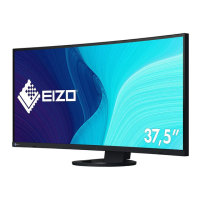
What to do if I can't access the Setting menu on my Eizo FlexScan EV3895?
If the Setting menu does not appear on your Eizo monitor, check whether the switch operation lock function is active.
How to fix shifted windows and icons on Eizo monitor?
If the positions of windows and icons are shifted when your Eizo monitor is turned off/on or restored from power saving mode, turn the setting “On” for “Compatibility Mode” on the “Administrator Settings” menu.
Why does my Eizo FlexScan EV3895 Monitor have noise on the screen?
If noise appears on the screen of your Eizo monitor, set “Overdrive” to “Off” in the Setting menu. Note that when inputting HDCP system signals, normal images may not be displayed immediately. When inputting an HDMI signal, try changing “Signal Format” in the “Administrator Settings” menu.
What to do if there are afterimages on my Eizo FlexScan EV3895 Monitor?
Afterimages are particular to LCD monitors. To minimize afterimages on your Eizo monitor, avoid displaying the same image for a long time. Use the screen saver or power saving function. To remove such a phenomenon, change the image or keep the power turned off for several hours.
Why is the text blurred on my Eizo FlexScan EV3895?
If the text appears blurred on your Eizo monitor, check that your PC is configured to meet the resolution and vertical scan frequency requirements of the monitor. Also, try setting the magnification of display on the OS to “100%.” When using multiple monitors, try setting the magnification of display to “100%” on all monitors.
What does it mean if the power indicator on my Eizo FlexScan EV3895 is flashing orange and white?
If the power indicator on your Eizo monitor is flashing orange and white, this may occur when the PC is connected to the DisplayPort connector. Use a signal cable recommended by us for the connection. Also, check the connection and condition of the USB devices connected to the monitor. You can also try turning off the main power switch on the rear side of the monitor, and then turning it on again.
How do I stop the brightness from changing automatically on my Eizo monitor?
To stop the brightness from automatically changing on your Eizo monitor, try setting the Auto EcoView setting to “Off.”
How to fix Eizo monitor screen being too bright or dark?
To adjust the screen brightness on your Eizo monitor, use the “Brightness” or “Contrast” settings in the Setting menu. If the screen is too bright, you can also try turning the Auto EcoView setting to “On”.
What to do if the Eizo FlexScan EV3895 shows no picture and the power indicator is off?
If your Eizo monitor displays no picture and the power indicator doesn't light up, try the following: * Ensure the power cord is properly connected. * Turn on the main power switch located on the rear side of the monitor. * Turn off the main power switch, wait a few minutes, and then turn it back on. * Increase the “Brightness”, “Contrast”, or “Gain” in the Setting menu. * Switch the input signal. * Turn “On” the “Compatibility Mode” in the “Administrator Settings” menu. * Move the mouse or press any key on the keyboard. * Verify that the PC is turned on. * Turn off the main power switch and then turn it on again. * If connected via DisplayPort, use a recommended signal cable. * Check the connection and condition of USB devices connected to the monitor.
| Energy efficiency scale | A to G |
|---|
Diagram and explanation of warning symbols and their meanings.
Information on appropriate usage scenarios, safety measures, and limitations of the monitor.
Details about the LCD panel, including stabilization time, afterimages, and pixel characteristics.
Guidance on monitor setup, including installation, cleaning, and general maintenance procedures.
Recommendations for optimal viewing comfort and eye strain reduction.
Overview of key features including curved display, free layout, and docking capabilities.
Detailed explanation of front and rear monitor controls and their functions.
List of supported resolutions for DisplayPort, HDMI, and USB-C connections.
Instructions for adjusting display settings in Windows and macOS for proper image display.
Guide on how to navigate and operate the monitor's switches and menus.
Procedure for selecting and switching between different input sources.
Explanation of pre-installed color modes for various display purposes.
How to adjust the screen brightness to suit your environment and preferences.
Instructions for setting speaker and headphone volume levels.
Basic steps for accessing and navigating the monitor's advanced setting menus.
Detailed functions available in the setting menu, including color, signal, and preference adjustments.
Configuration options for input signals, screen size, and color format.
Customizing monitor settings like power saving and indicator behavior.
Features for energy conservation, including automatic brightness adjustment.
Setting display language and viewing monitor information.
Instructions on connecting the monitor to multiple computers simultaneously.
Guide to displaying multiple input signals side-by-side on the screen.
Enabling USB device sharing across multiple connected PCs.
Methods for switching between USB upstream ports for connected devices.
How to access and navigate the Administrator Settings menu for advanced configuration.
Detailed functions including Auto Input Detection, Compatibility Mode, and USB/Ethernet settings.
Solutions for problems related to the monitor not displaying an image or power indicator status.
Troubleshooting steps for screen brightness, color, text blur, and afterimages.
Resolving issues with menus, audio, USB devices, and computer sleep mode.
Step-by-step guide on how to safely detach the monitor's original stand.
Instructions for mounting the monitor to an external arm or stand using VESA standards.
Procedure for reattaching the monitor's original stand after removal.
How to use the monitor as a docking station for network and peripheral connectivity.
Detailed technical specifications of the LCD panel, video signals, USB, audio, and power.
List of registered trademarks and software licenses associated with the product.
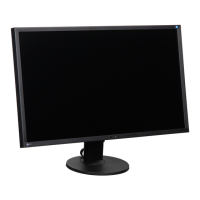

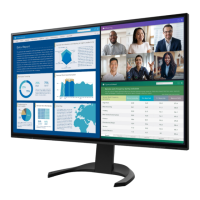
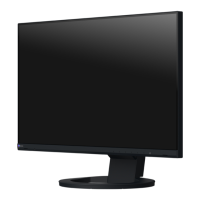

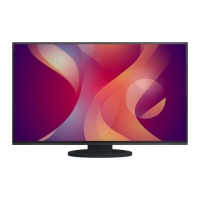
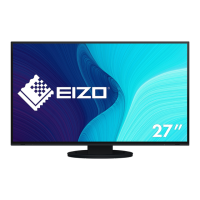
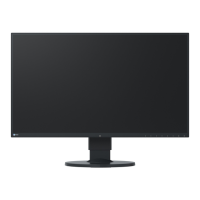
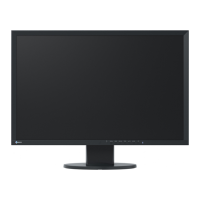
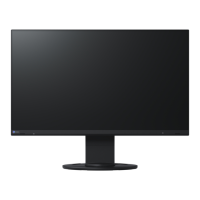
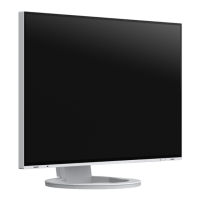
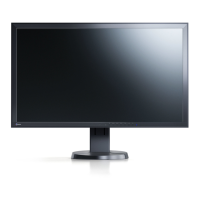
